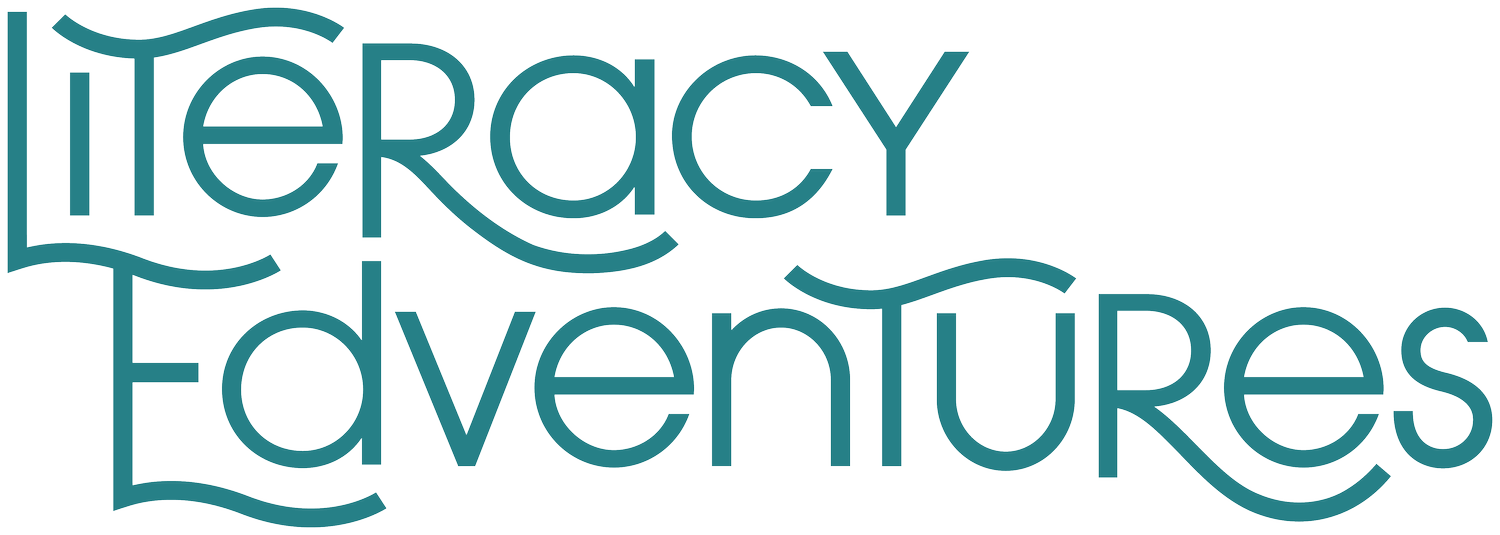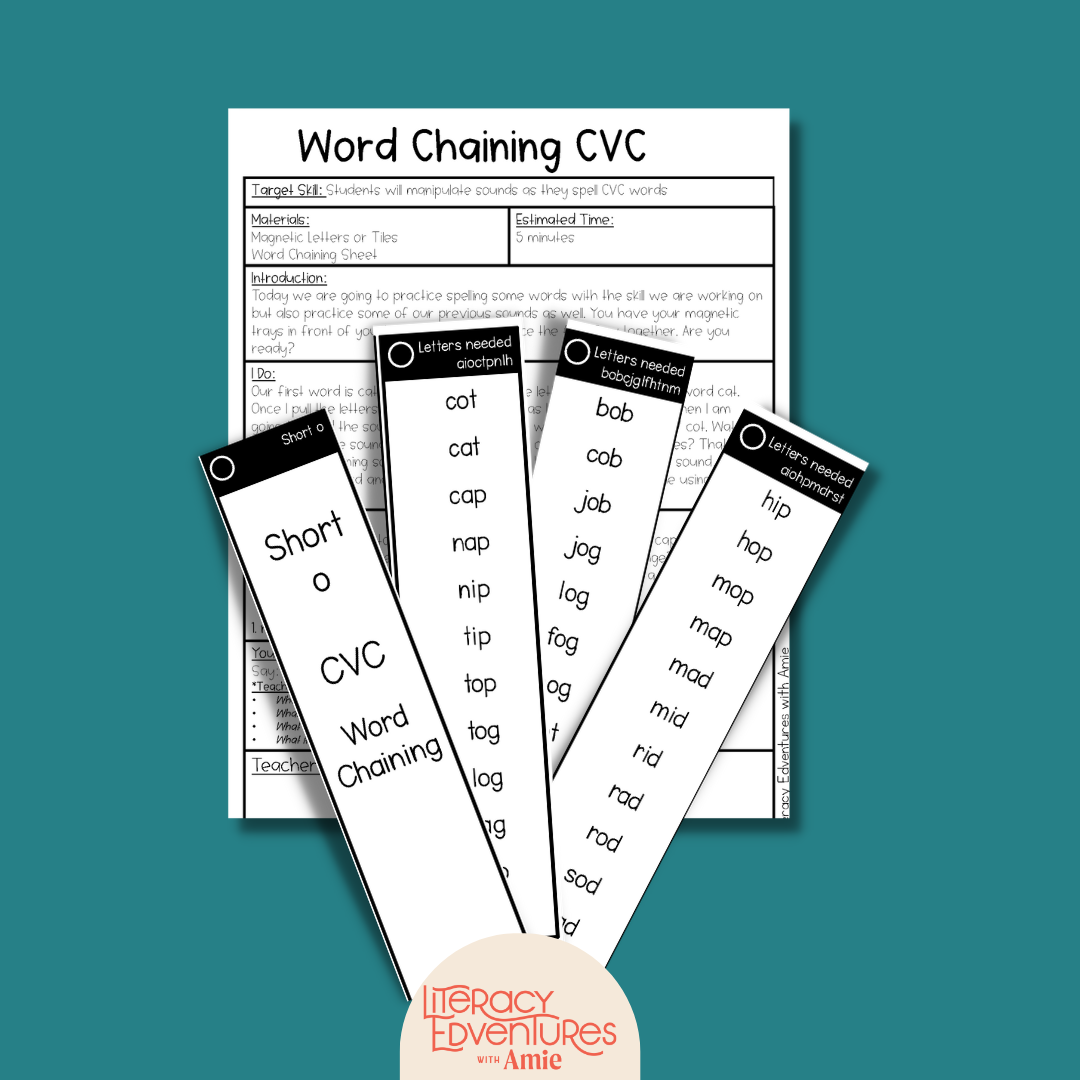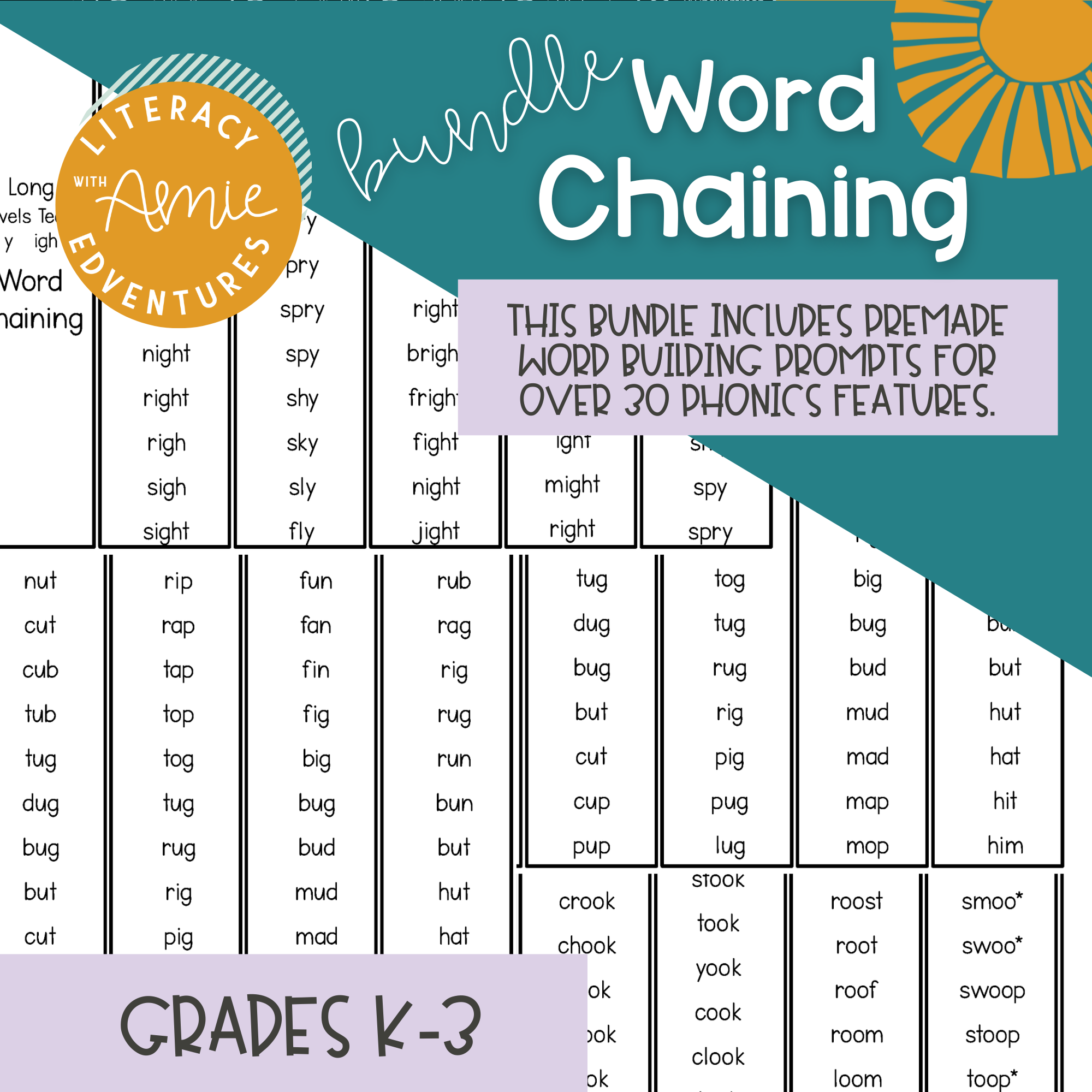Word Chaining: How to Series
Hey friends! I am so excited to bring you this “How to Series.” Don’t worry, the other blog post will still keep rolling, but there is something to be said for a quick little how-to, PLUS a freebie, especially for busy teachers! If you missed the first one on dictation, you can read it here!
Let’s start with an activity.
Spell the word map.
How many sounds did you hear? What letters did you use to spell the word map? How did you go from hearing the sound to putting the written form down? It seemed pretty easy for you I am sure.
Now, let's take it one step further.
Take the word map, change one sound, and make the new word tap.
You simply swapped out the ending sound to make the new word. Completing that task required you to manipulate the phonemes or sounds in the word map.
You had to understand how to segment or sound out the word m-a-p, blend the word map, and then isolate or change the last sound to make the new word tap. My guess? That was probably pretty simple for you too.
The problem?
Unfortunately, this process can be very difficult for some of our students. Word chaining is a crucial activity that should be a part of every phonics lesson for early and beginning readers. When we ask our students to listen carefully for the sounds they hear and then attach those sounds to symbols, they are engaging in a process known as orthographic mapping (learn more about that process in a guest blogger post by Jessica Farmer)
In short, orthographic mapping is the process in which our brains store words for automatic retrieval. This is exactly why we should be using activities that support this process.
Today I am going to share with you exactly how to conduct a word chaining activity in your classroom. But before we get started, let’s get you prepped.
Considerations
You should always prep words ahead of time. There is nothing worse than sitting in front of your students not knowing what word is going to come next.
When planning words for your word chaining activity, ensure that the words align with your scope and sequence. You want to make sure that you are only using words with phonics patterns that have been explicitly taught. Likewise, you want to ensure that you are pulling in older skills for review.
Use manipulatives or boxes to provide a scaffold for your students. Manipulating letters helps to make it multisensory for students. I love using magnetic letters!
Use common language and be consistent with it. Say things like “spell the word ______” or “Change one sound to make the new word _______”
Now, let’s get into the lesson!
I like to follow the I DO YOU DO WE DO model. The lesson usually goes something like this.
I do: I will spell the word hip, and watch as I pull down each letter to make the word hip. I can sound it out by touching each letter h-i-p. Now, watch as I change one sound to make the new word hop. I change the beginning sound from /i/ to /o/
We do: let’s try a few together. Change one sound to make the new word mop. (Teacher and students build the word together. The teacher thinks aloud while working through the process.) What sound did we change? Now let’s change one sound to make the new word /map/ What sound did we change?
You do: Now it’s your turn to try it on your own. We have the word /map/ let’s change one sound to make the new word /mad/ (Continue manipulating sounds with a few more words) mid mod sod pod pop top
tog log
Let’s Recap!
And that’s it! Let’s recap, Word chaining is a strategy used to help connect the sound to the symbol which supports the orthographic mapping process. Model the process for your students and encourage them to blend and segment the words throughout.
Free Resources:
I know that coming up with the words to use can be tricky and time-consuming. This is why I have a couple of free lists to help get you started! You can snag them above!




